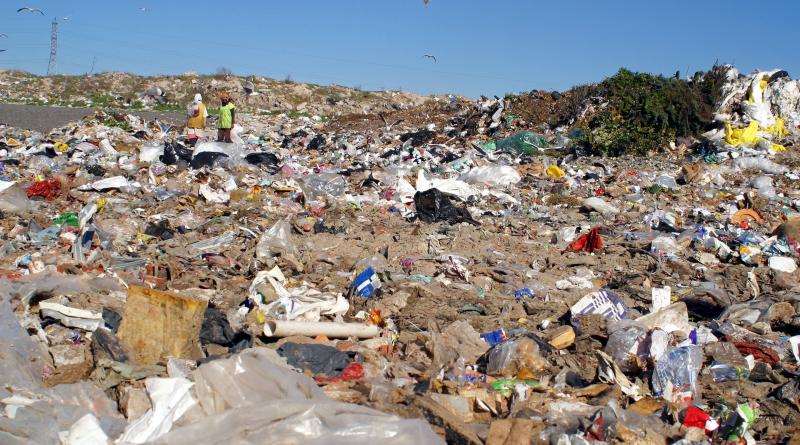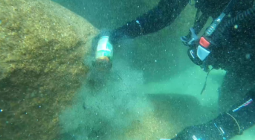From trash to power: how to harness energy from Africa’s garbage dumps - and save billions in future damage

New research on garbage dumps in 44 sub-Saharan African countries shows that 95% are unregulated. The landfill sites still take in new garbage even when they are filled to capacity. As the waste decomposes, these sites release harmful greenhouse gases. However, using the methane gas to generate energy instead could save the continent billions of dollars. We talk to sustainability scientist and author of the research, Nkweauseh Reginald Longfor.
What kind of economic and environmental damage result from uncontrolled garbage dumps?
About 70% of municipal solid waste ends up in landfills or unregulated dumpsites. In sub-Saharan Africa, for instance, 24% of waste is disposed of in landfills, while the rest is left on open dumps, streets, rivers, and other unsuitable locations.
We live in a society where waste is often disposed of without considering the cost to either the consumer or the producer. Waste decomposing in landfills releases greenhouse gases. The release of carbon dioxide, nitrates and hydrogen sulfides can harm people’s health, either by polluting the air we breathe or contaminating nearby water sources.
My research argues that this poorly disposed of waste also causes economic damage. To determine this economic damage, we compared the ongoing costs of poor waste management in 44 sub-Saharan African countries between now and 2060, with the costs of better waste management practices such as sanitary landfills and anaerobic digestion.
What are anaerobic digestion and sanitary landfills?
Anaerobic digestion is a natural process that uses an anaerobic digester (a sealed container) in which microorganisms such as bacteria convert organic waste into biogas. The most energy-rich component of biogas is methane, which makes up 50–75% of its content, depending on the type of waste and operating conditions.
Anaerobic digestion also converts organic waste into digestate, which is organic fertiliser useful for gardening or farming. Cities in Europe have used anaerobic digestion to convert organic matter found in municipal solid waste into electricity, cooking gas and heat for the past 20 years.
Sanitary landfills are municipal dumps where wells and pipes are installed to collect landfill gas, which is about 50% methane and 50% carbon dioxide, with a few other compounds. This gas can be used to generate electricity, to fuel boilers, or processed for use in vehicles. Sanitary landfills are also designed to prevent pollutants from escaping into the air, soil, or groundwater. To be effective, they need to be properly located, built, maintained, and operated.
How can this landfill gas offset economic damage?
If we capture methane, a harmful greenhouse gas, and convert it into energy, we reduce its release into the atmosphere, which lessens the effects of climate change. This in turn reduces the economic costs of problems like habitat loss, property damage, disease spread, and soil and water contamination. Our research showed that the cost of installing sanitary landfill and anaerobic digestion technologies to convert waste into energy is only a fraction of the economic damage caused by methane emissions. These green technologies are cost-effective solutions for tackling the high economic costs of climate damage.
Read more: Capturing the true wealth of Australia’s waste
Secondly, the methane contained in organic waste can be a renewable energy source. This renewable energy source would help us decrease our reliance on fossil fuels. This would mean lower energy costs, more energy security, and less environmental and economic damage from fossil fuel use.
According to our research, by 2060, Sub-Saharan African countries could generate between 20 and 58 million MWh of electricity just from waste. This could provide each African with an extra 100–230 kWh of electricity. From 2035 to 2060, the top twenty countries could produce between 0.2 and 3.3 million MWh to 0.4 and 8.5 million MWh of electricity from waste.
How did you calculate that current waste disposal practices will cause US$6.7 billion worth of damage in Africa by 2060?
Our study of 44 sub-Saharan African countries was quite revealing. All 44 countries use landfills to dispose of waste. What stood out was that over 95% of these landfill sites in Africa are unregulated. The sites still accept waste even after they are full, and continue releasing greenhouse gases as the organic waste decomposes.
Read more: It will take more than good intentions to clear Nairobi's garbage mountains
We assessed the damage caused by these emissions - one kilogram of methane emissions is estimated to cost, on average, US$1.943. Our research indicated that if we continued disposing of solid waste as we do now, the economic damage from methane emissions could reach billions of dollars. This cost seems to double every decade from 2025 to 2060.
While all sub-Saharan Africa countries are likely to experience some damage, certain countries could face costs running into billions of dollars. For example, by 2060, Ethiopia, Nigeria, the Democratic Republic of Congo, South Africa, and Tanzania could accumulate economic damages of US$6.7 billion, US$4.5 billion, US$4.7 billion, US$2.7 billion, and US$3.2 billion, respectively.
Which countries on the continent are most at risk?
My research has found that countries like Angola, Mauritius, and Cape Verde rely heavily on landfills for waste management. Their landfills are 70%, 90%, and 91% full respectively. These countries are most at risk. The estimated economic damage to Angola will rise from US$153 million in 2012 to a projected US$1.7 billion in 2060 because of their reliance on landfills.
Countries with growing populations and economies, such as Ethiopia, Nigeria, the Democratic Republic of Congo, South Africa, Tanzania, Madagascar, Mozambique, and Uganda, could face economic losses exceeding US$2 billion each by 2060 if they do not clean up their landfill practices.
All African countries must introduce waste reduction, reuse, recycling, and energy recovery, promoting public health, reducing greenhouse gases, and supporting a green, circular economy. Sub-Saharan African countries should also adopt policies that promote private investment in the kind of clean waste management that leads to economic, social, and environmental benefits.





